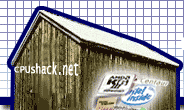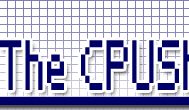


 |
 |
 |
| home | about | pictures | reference | trade | links |
RM7000TM Extends QED's High-End Roadmap for Embedded Applications
SAN JOSE, Calif., Microprocessor Forum -- October 21, 1996 -- Following its debut as a full-service microprocessor company focusing on the high-end embedded market, Quantum Effect Design, Inc. (QED) will announce the details of its first QED-brand RISCMarkTM (RM) series microprocessor at the ninth annual Microprocessor Forum that begins today. The company announced its expanded fabless business model at the Embedded Systems Conference held here last month.
The RM7000TM is QED's fourth-generation high-performance, cost-effective MIPS®based RISC microprocessor designed to meet a stringent price/performance ratio. It represents next generation QED technology and continues the high-performance architectural legacy of the company's popular MIPS-based microprocessor designs -- the R4600TM R4700TM R4650TM 4640TM and R5000TM.
The RM7000 is primarily targeted at the high-end embedded market, the internetworking and printer segments in particular. QED is currently engaged in customer discussions to further develop beta relationships.
"We approached the RM7000 from a market perspective and set out to achieve a dramatic increase in overall system performance, not just to design the highest clock rate microprocessor," said Tom Riordan, QED president and CEO. "In working with potential customers to specify the next generation high-performance embedded microprocessor, our technology analysis led us to develop the next logical progression of an integrated microprocessor product that fit the requirements of the high-end embedded market. Therefore, the RM7000 represents the technology solution that meets future market requirements, such as higher I/O bandwidth and more demanding price/performance ratios."
Key features of the RM7000 include: superscaler instruction issue, non-blocking caches, 16K instruction cache and 16K data cache, both 4-way set associative, and a 256KB 4-way set associative secondary cache integrated on-chip.
Superscalar instruction issue is a performance enhancement that improves processor efficiency. This feature enables two instructions to be processed within one cycle, thereby achieving higher system performance without increasing clock speed.
The RM7000 features non-blocking caches that allow instruction processing to
continue underneath a cache miss. An enhancement to the system interface allows the
address of a second cache miss to be transmitted to the memory controller. Together, these
two features address a very specific requirement of the networking community for higher
system performance, and specifically, increased bus interface performance.
The RM7000's 16K instruction cache and 16K data cache are both 4-way set associative
with cache locking per set. The higher associativity, when compared to the R5000,
provides higher performance per bit of cache, greater performance stability across multiple
compilations and greater granularity for the cache locking feature.
The microprocessor features a record-setting 256KB 4-way set associative
secondary cache integrated on-chip. On-chip integration of secondary cache provides
several advantages: it minimizes the memory access latency to boost system performance,
it reduces the power consumption penalty incurred by going off chip for high-speed
secondary cache, and it significantly reduces overall system costs in cache-based systems.
In addition, by integrating the next level of memory hierarchy, the RM7000 can provide
very high bandwidth to its execution core without increasing the pincount and therefore
increasing package cost. QED believes that these advantages will make the integrated
secondary cache architecture a standard for all high-performance, cost-sensitive
applications.
The RM7000 uses a streamlined superscaler pipeline with integrated 256KB secondary cache on chip which together provides very low system cost and very high system performance. The RM7000 does not focus solely on providing the highest clock rate CPU, but rather focuses on providing the highest overall system performance.
As a result of QED's "simple is better" micro-architectural approach, the RM7000 demonstrates a cost-effective way to provide leading-edge performance. The streamlined superscalar micro-architecture maximally leverages advancing silicon technology to provide high computational throughput versus other more micro-architecturally complex desktop microprocessors where higher complexity is leading to ever diminishing returns. As an example, when compared to other desktop microprocessors, and after normalizing to the same technology, the RM7000 provides about double the performance per mm2 of die area.
Quantum Effect Design's future product families will include high-end, 32- and 64- bit embedded microprocessors targeted at emerging and fast-growing markets such as internetworking, printers, games, Internet TV/set-top boxes/cable modems and high-speed communications devices. The company has an unsurpassed record of designing and delivering innovative high-performance microprocessors in breakthrough time-to-volume.